Editors’ Choice
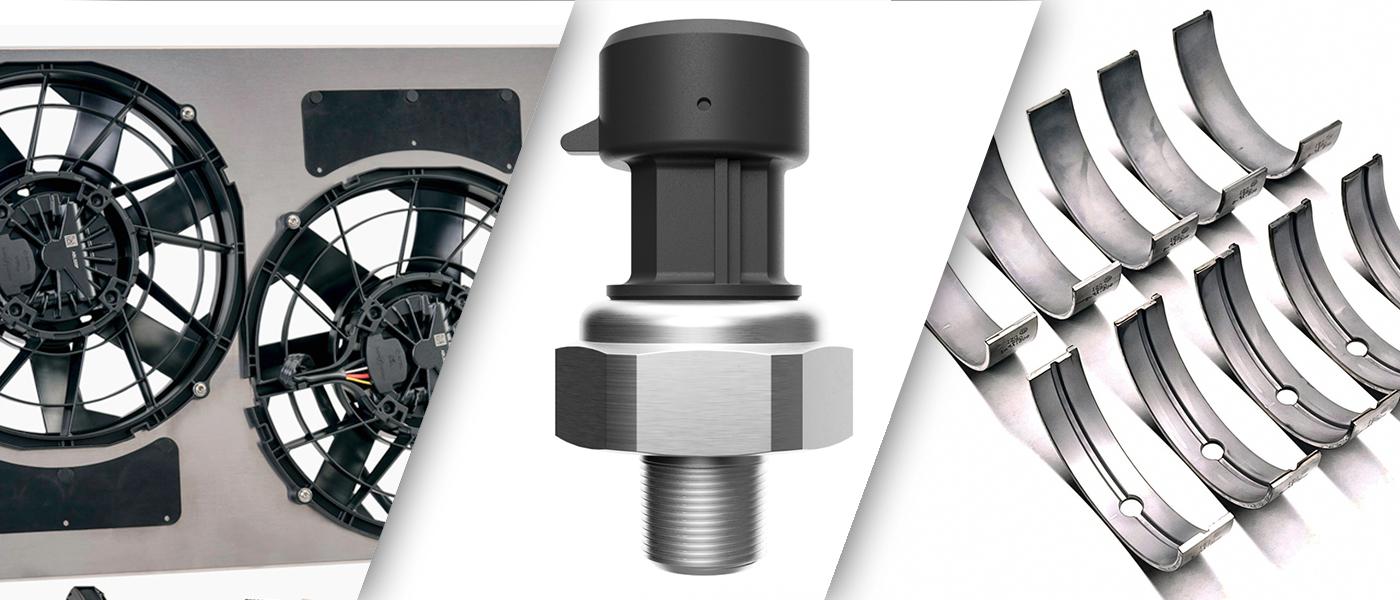
Hundreds of new product announcements cross the desks of PRI editors each month. Following are our top picks for May.
Brushless Aluminum Powerpack Cooling Fans
Derale
Derale in Los Angeles, California, has introduced shrouded aluminum powerpacks with brushless motors and PWM control, now available in single- and dual-fan configurations.
“Brushless technology is the wave of the future,” said Tom Longo. “There’s more longevity, a lower amperage consumption, and the fans provide more cfm.”
There are two single-fan powerpacks that feature a 17-inch puller fan and can provide up to 2,800 cfm. And there are three dual-fan setups with 12-inch puller fans that provide a total of up to 4,400 cfm. The units feature TIG-welded aluminum shrouds, a plug-in harness, and multiple mounting options.
“They’re universal kits with applications in typical race markets as well as muscle cars and street rods,” added Longo. “Cars in those markets need more cfm and may have limited space.”
The fans all have integrated PWM control, which runs the fan from zero to 100%, depending on the cooling requirements. Sensors are available for 185-, 195-, or 215-degree max temperatures. Kits come with complete mounting hardware and an illustrated manual.
“Most race cars today, you flip the switch, and the fan is on all the time, and you’re drawing power that you don’t need,” explained. Longo. “PWM will run the fan at the speed it needs to cool the engine. If you need 60%, get 60%.” —Mike Magda
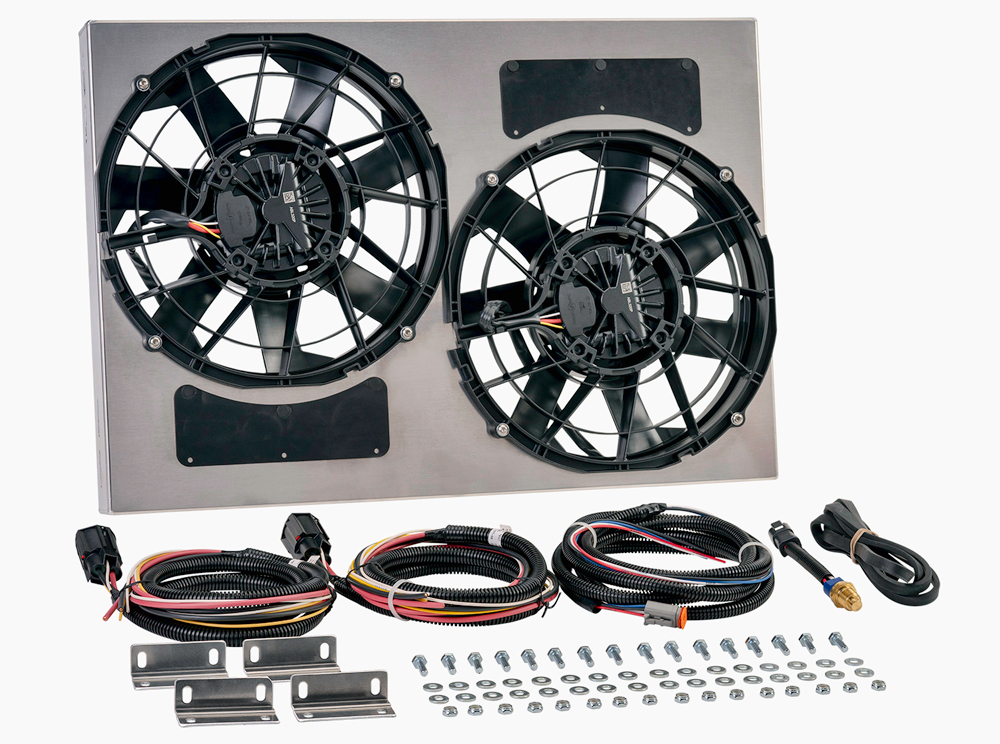
3FP Pressure Sensor
Trensor
What better environment to test a pressure sensor than a 10,000-horsepower, nitro-burning Hemi engine?
“The first class of racing we partnered with was Top Fuel,” said Kris Gilman of Trensor, Irvine, California. “Our thinking was, if these sensors can survive and provide accurate data, then we should be good for the rest of the classes.”
For the first release of the company’s new 3FP pressure sensors, there are seven part numbers with different pressure ranges from zero to 500 psi. More are expected to be released in the near future.
The sensors use OEM technology as the foundation and then apply added features, such as an atmospheric reference with a waterproof/dustproof membrane. This allows the sensor to automatically recalibrate with elevation changes.
Other features include standard three-pin APTIV electrical connection, standard 22-mm hex 1/8-27 NPT male mounting thread, and stainless-steel pressure port. The sensors are compatible with all popular racing data recorders and gauge clusters.
Gilman said the Top Fuel teams Trensor worked with would often have sensors fail within a race weekend. “They used ours and they wouldn’t fail,” noted Gilman. “We’ve received a lot of anecdotal evidence that supports that from motorcycle racers where there’s a lot of vibration. Our sensors are rated to 40 G of axial vibrational force.” —Mike Magda
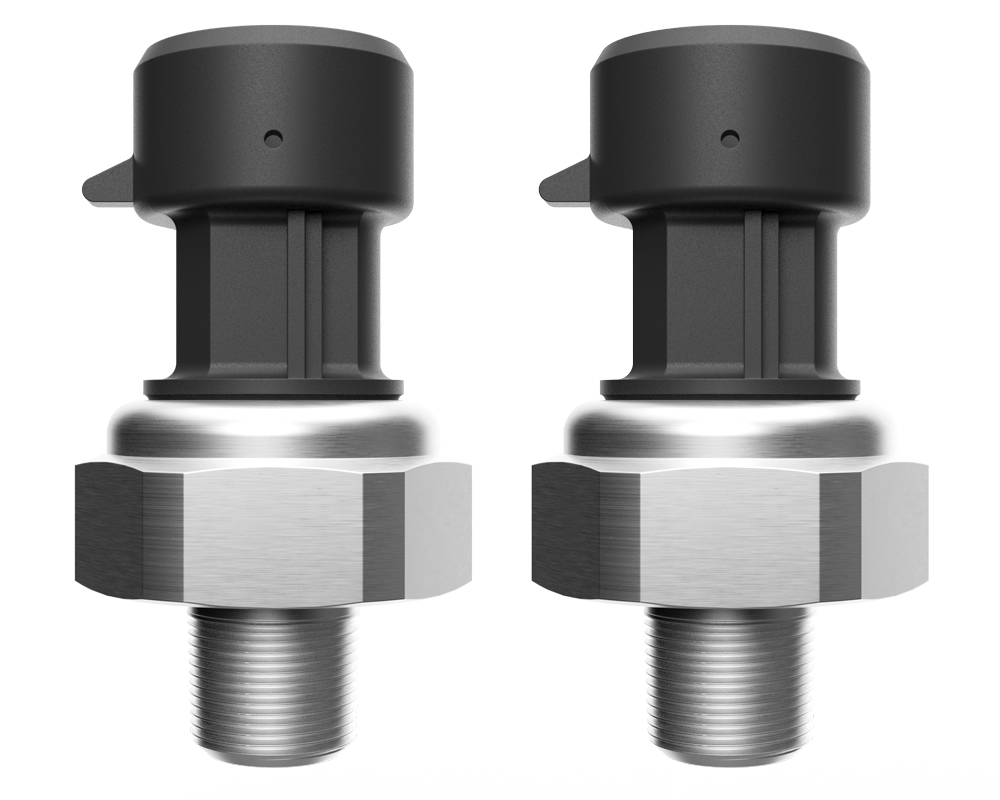
MS8000 Main Bearing For 6.6L Duramax
Daido Metal USA
Daido Metal USA in Farmington Hills, Michigan, is leveraging its motorsports technology in developing the MS8000 main bearing set for the 6.6-liter Duramax diesel engine.
“Daido was the OEM supplier for the original Duramax design,” noted Dustin Kull. “The OE spec for that design was a lead-indium material.”
The aftermarket version retains the lead-indium overlay plating on a bi-metal copper-lead alloy base. The bearing is also constructed using Daido’s proprietary boring process that helps reduce oil leakage by eliminating the crush relief.
“This is especially beneficial on large-bearing applications,” said Kull. “This design maintains oil film better near the parting line, compared to a conventional crush relief, which always loses oil film at the parting line. Saving that oil helps supply more oil to the rod bearings.”
The lead-indium overlay on copper-lead alloy has been proven in Formula 1, World Endurance Championship, IndyCar, Moto GP, and other leading motorsports disciplines. Daido representatives said its materials offer a combination of conformability or softness to strength or hardness. Conformability helps the bearing surface adapt to load and shaft bending to distribute the oil film better. —Mike Magda
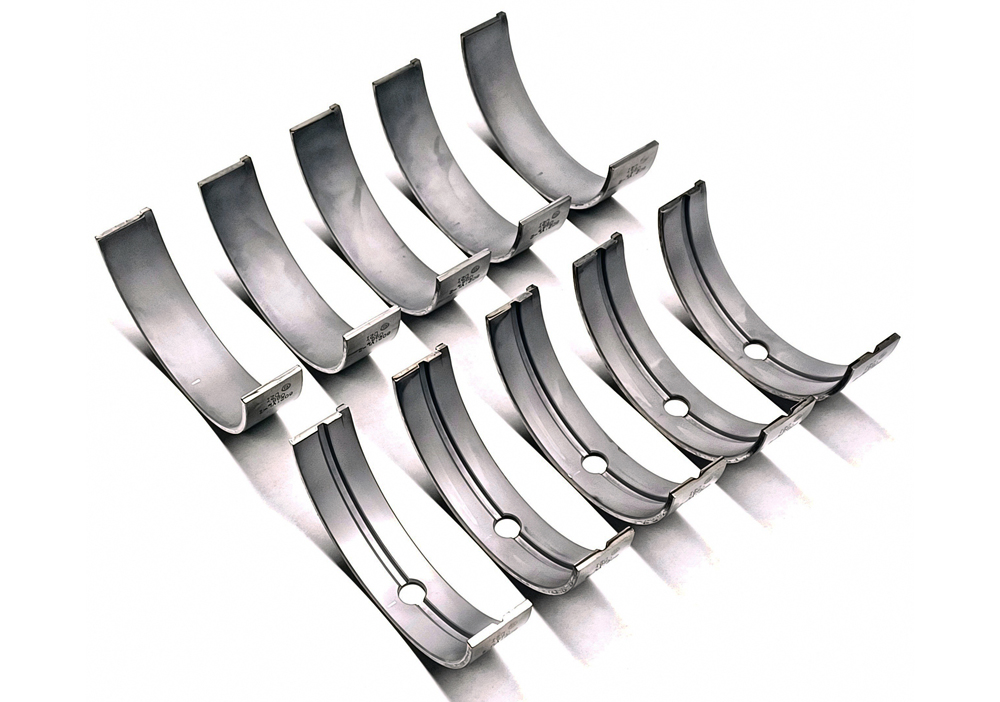
Billet Transbrake Valve Body For Powerglide
TCI Automotive
The TCI catalog now boasts a new billet transbrake valve body for Powerglide transmissions.
“It’s a new product for TCI,” said Shane Pulido of the Olive Branch, Mississippi-based manufacturer, noting that it was developed with TCI engineer and racer Jeff Reed. “It hit so hard the first time he tested it that we had to bring down some of the power.”
Constructed from billet aluminum, the valve body will show much less wear than a modified cast-iron factory unit. Other benefits include more consistency through precise tolerances, and it weighs less than a conventional unit. Another major feature is a Pro Tree design and heavier reverse springs for faster release.
“We developed it over six months,” said Pulido. “We have a valve-body machine at work and were able to test it and make sure that the reaction times were as good or better than what was available before.”
TCI also has a transmission dyno in its shop that can load up the torque converter with various load pressures and launch the transmission.
“Then we put it in a car to test at the track. That’s three different ways we tested it,” said Pulido. “One of the benefits is that we are using stock-style valves, so anyone can rebuild it themselves. It’s very racer friendly.” —Mike Magda
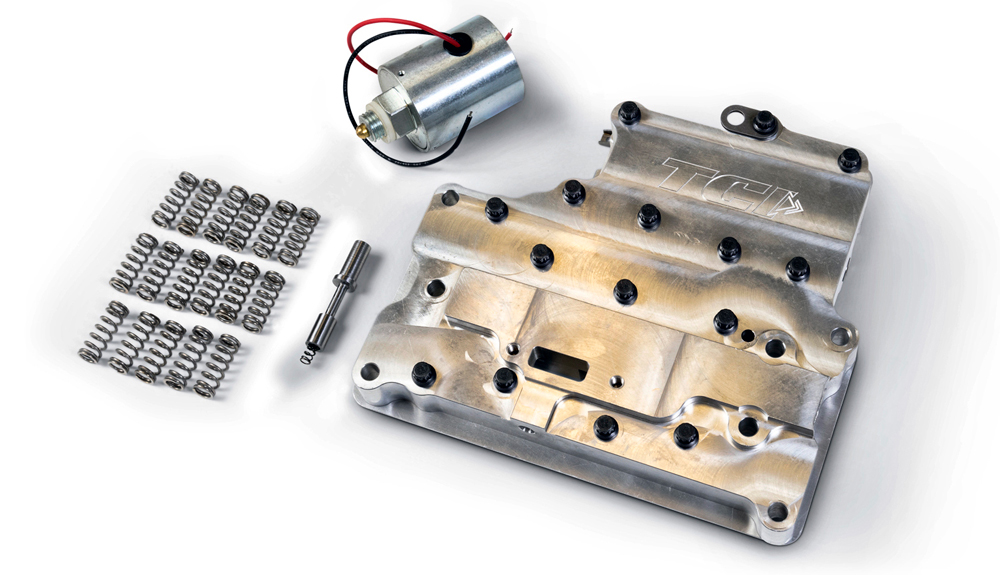
Hyperformance Pistons
Speed of Air
Developed to enhance the efficiency of medium-duty diesel engines, Hyperformance Pistons featuring Speed of Air’s patented technology is also finding success at the drag strip and on the dirt track. Speed of Air (SoA) in Reno, Nevada, has licensed the technology to United Engine and Machine (UEM).
The SoA technology consists of precise, CNC-machined indentations on the piston crown called turbulators. Also known simply as dimples, these turbulators create a thinner, well-attached boundary layer between the air-fuel mixture, its flame front, and combustion chamber walls, allowing the flame front to burn closer to the cylinder walls. According to a two-year test program by a large diesel engine remanufacturer, the results show a reduction in fuel consumption, reduced emissions, and increased power.
In addition to the diesel applications, some of this technology is being run in competition. IMCA dirt modified racer Bobby Hogge IV is a major event winner in California, and Daniel Schierholt runs a 506 Mopar-powered dragster at the strip. He set up a straight A-B test with his engine, replacing only the pistons while keeping the same compression ratio.
“Even though I lost a little at the 60-foot, the car gradually picked up all the way down track,” said Schierholt. “The car also began to use less methanol during these passes, which to me is a testament to the more complete burn we are seeing during the combustion process.” —Mike Magda
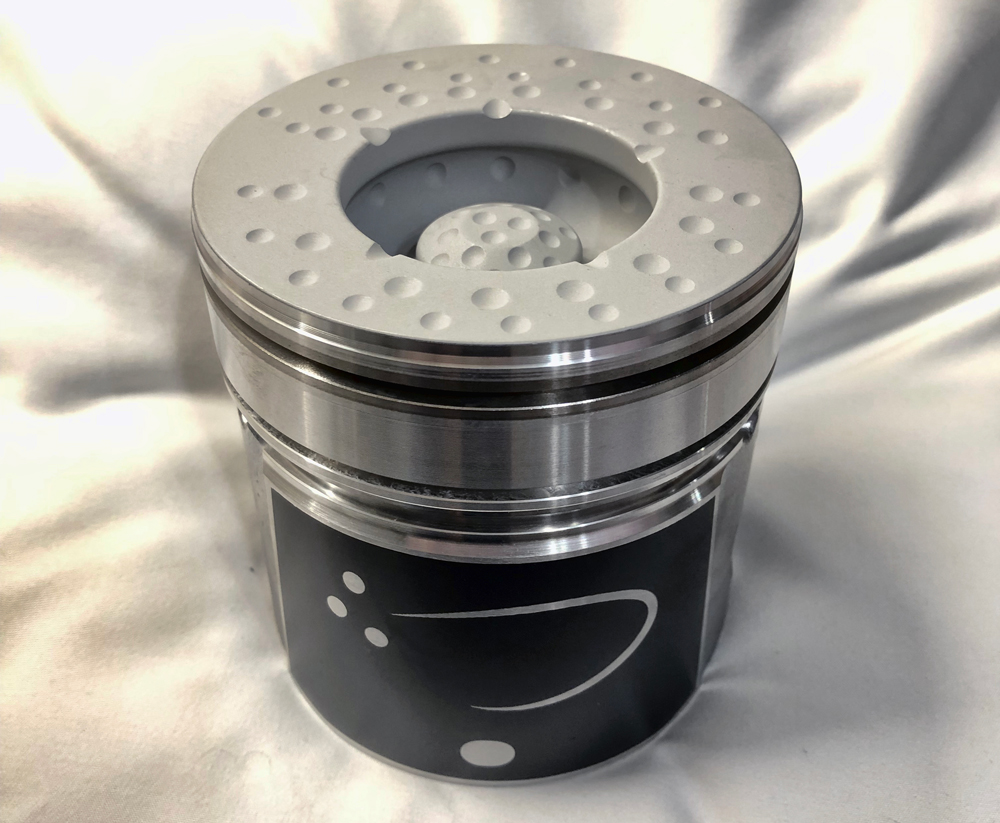
Merlin IV Cylinder Block
World Products
The Merlin IV iron big block Chevy cylinder block from World Products in Louisville, Kentucky, has been available in numerous deck heights and bore sizes for some time, and now special features like billet main caps, 55-mm cam bores, and .904-inch lifter bores are offered in the catalog.
“Before, you either had to take it to a machinist or special order those features,” said Jack McInnis. “We had a lot of requests for those features, so we decided to make it a stocking part number.”
Cast with thicker main webs and thicker cylinder walls than previous Merlin blocks, the Merlin IV also features front oil feed for dry-sump systems and relocated oil feeds and restrictor provisions to the front of the block.
The Merlin IV can be ordered in conventional deck heights of 9.800 and 10.200 inches, with either nodular iron or billet-steel main caps. It’s also possible to get them in a Gen VI configuration with a one-piece rear seal. Bore sizes range from 4.250 up to 4.595 inches
The block is also available in deck heights of 9.500, 9.850, and 10.250 inches. Most blocks come with standard cam journals of 2.120 inches and .842-inch lifter bores. However, some blocks are available with 2.283-inch cam journals that support 55-mm Babbitt bearings and .904-inch lifter journals.
“These blocks are really popular with sportsmen drag racers,” added McInnis. —Mike Magda
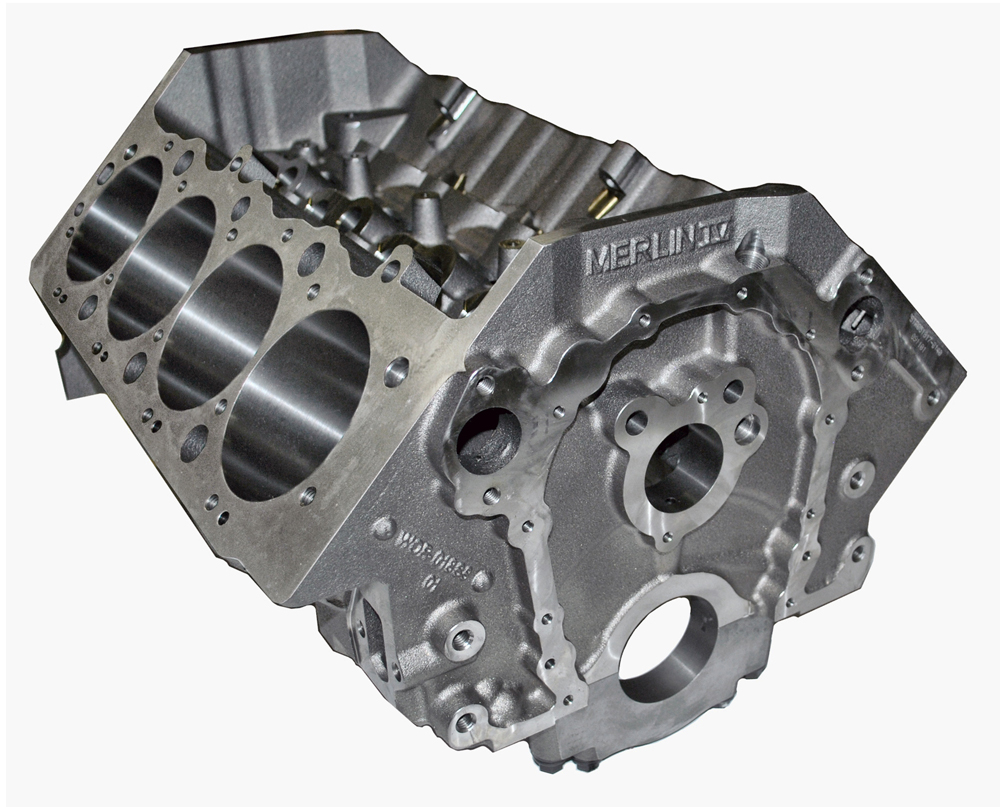
Hot Rod Ties
Heatshield Products
Plastic ties are often used to secure wrappings, wiring, and other components on a race car, and lately the quality of these ties hasn’t been up to the task, especially in a high-temperature environment.
Heatshield Products in Escondido, California, has now developed Hot Rod Ties from a specially formulated plastic that can withstand radiant heat exposure up to 220 degrees F.
“Hot Rod Ties allow you to quickly secure items near heat sources without fear of them failing,” said Cole Quinell. “You can even use them to secure heat shielding over wires and fuel lines, which is very helpful in areas that you may need to open up frequently.”
These American-made ties are available in .14-, .18-, and .30-inch widths, and also in 8-, 11-, and 15-inch lengths.
“These are a staple in the racers’ tool box for quick fixes and are often used in areas that you need to get into frequently and quickly. Poor-quality plastic ties melt or become heat-soaked and brittle easily,” said Quinell. “Before Heatshield Products releases any product for sale, it tests it with racers of all types. The feedback has been great. Hot Rod Ties are made specifically for automotive applications. That means they are available in sizes and pricing that makes sense for a racer.” —Mike Magda
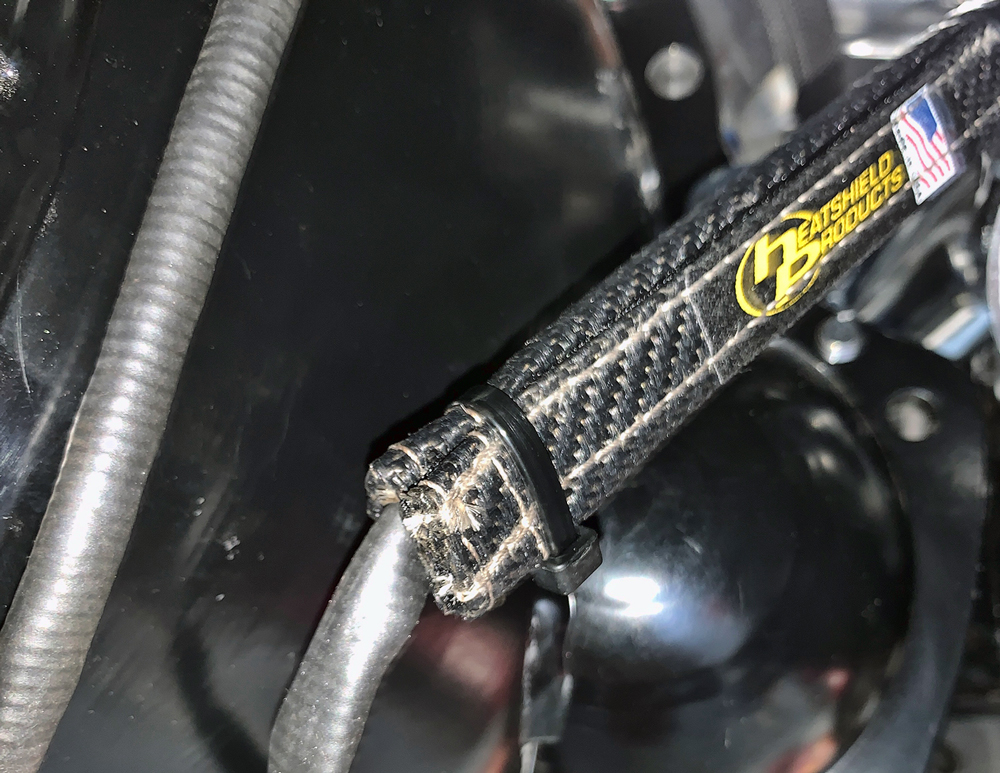 \
\
 MEMBERSHIP LOGIN
MEMBERSHIP LOGIN JOIN PRI
JOIN PRI


